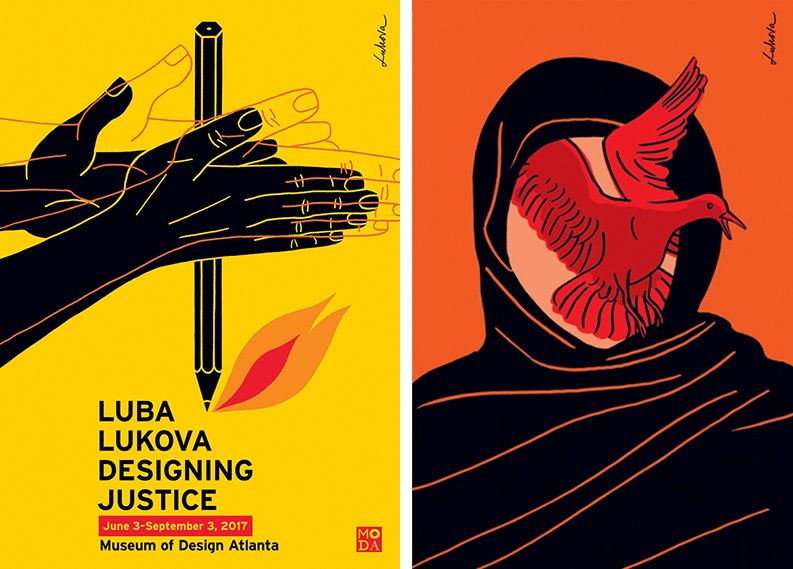
Left: Designing Justice Poster. Right: Bird. Courtesy of Luba Lukova.
Founded over a quarter of a century ago, the small-but-mighty Museum of Design Atlanta (MODA) rebooted in 2011 when it moved to the city’s Midtown arts district. Ever since, the museum has grown rapidly. As its Executive Director, I am privileged to lead the museum through this transformative movement, aided by a stalwart board of directors and a passionate staff.
Over the past six years, we have repositioned the museum as a forward-facing institution that champions the power of design to inspire change, transform lives, and make the world a better place. Forward-facing museums are far from the norm, of course. As institutions that find their roots in the physical places inhabited by the Muses of Greco-Roman antiquity, traditional museums are repositories for inspired objects from the past. They are the places in which we learn about prior human achievements and bygone ways of envisioning the world.
But, when it comes right down to it, there’s nothing to say that museums must look backwards. And, for a design museum, orientation is essential. Designers, after all, are futurists. As Brian Collins told Debbie Millman on a recent episode of “Design Matters,” “Design is a future-facing act and it is an optimistic act because everything we create is going to live in the future.” So, MODA looks forward rather than backward. This alignment informs several research questions that both the staff and the board of directors pursue on a day-to-day basis. We ask: “How do we re-design a museum to meet 21st century needs?” and “Can a design museum change the world?” These lofty and challenging questions guide everything that happens at MODA, from our radical friendliness to the exhibitions that are on view in our galleries.
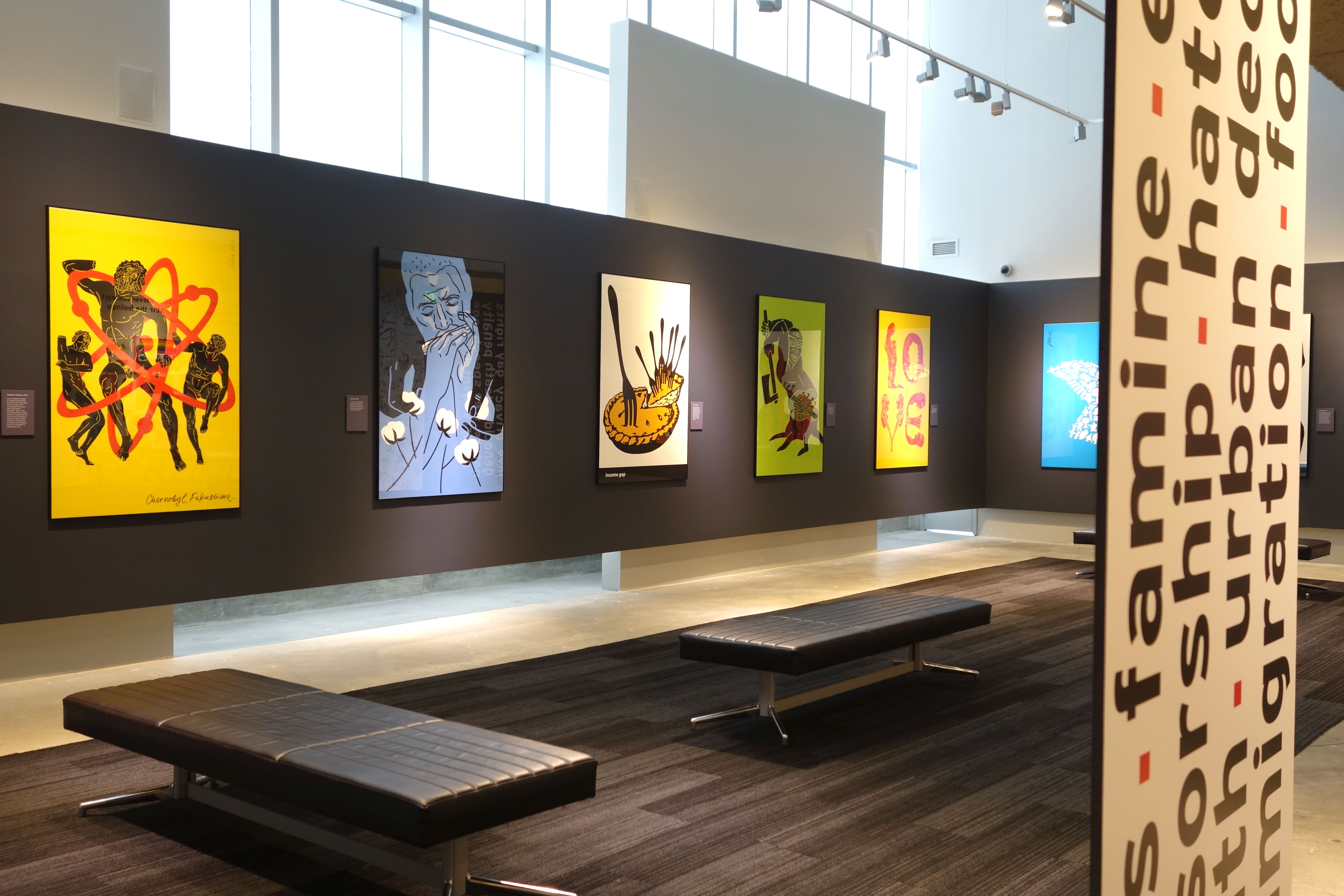
Luba Lukova Designing Justice exhibition. Photo by Susan Sanders.
When unexpected events left us searching for a last minute summer exhibition this year, we asked renowned artist and designer Luba Lukova for the honor of hosting her first solo museum exhibition and she agreed. Luba Lukova: Designing Justice opened at MODA on June 4 and will remain on view through September 3, 2017. Featuring about 50 of Lukova’s powerful and brilliant posters, the exhibition spotlights critical social justice issues that currently dominate our socially and politically polarized news cycle, including health care, women’s rights, LGBT rights, immigration, gentrification, and corporate corruption.
Born, raised, and educated in Bulgaria under the communist regime, Lukova immigrated to the United States in 1991 and established her studio in New York City. She is known for her mastery of line, color, and form and for her ability to transform recognizable images and objects into powerful symbols that convey potent messages. Her posters arouse empathy and provoke conversation across traditional social and political divisions. She works with the hope that her art can change the world, as she recently discussed in the online magazine Burnaway:
Art is a way to make people connect. It’s the great unifier. We are so divided in the US today. There is no one who could disagree. So why don’t we just agree that we have to fight these serious issues together? We have to feel empathy for each other. If you don’t feel empathy, then everything is meaningless because it means that progress depends on only a few people. If there is no empathy, human progress will not be possible—you see how many revolutions and movements in society are just about that, a huge number of people struggle. I feel empathy is the purpose of art.
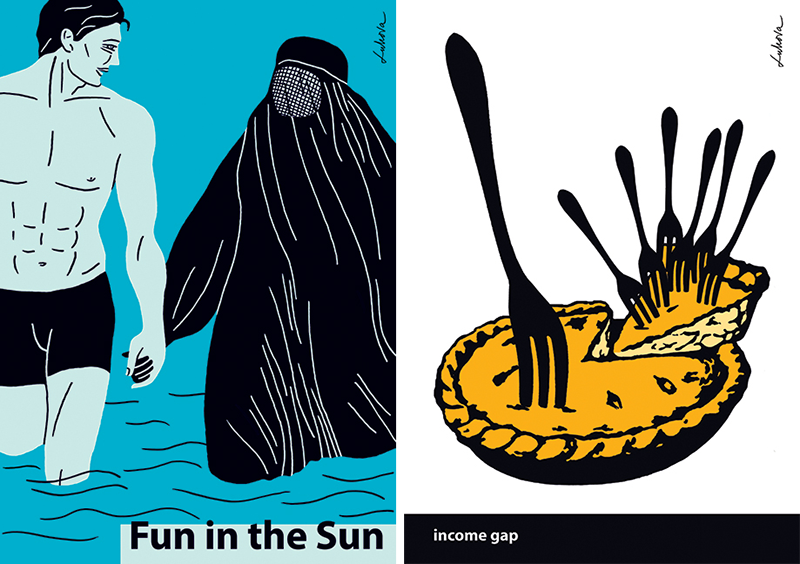
Left: Fun in the Sun. Right: Income Gap. Courtesy of Luba Lukova.
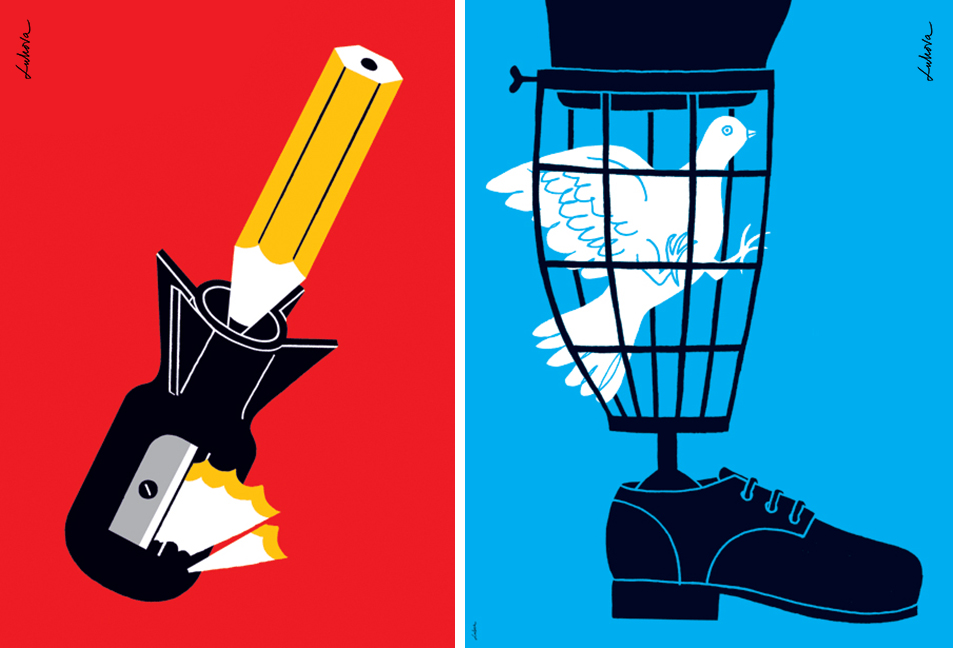
Left: Education Vs. War. Right: War and Peace. Courtesy of Luba Lukova.
Luba Lukova: Designing Justice is accompanied by interactive activities in MODA’s galleries. As a means of advocating for the power of design to change the world, we invite visitors to try out designer mindsets and practices. In the case of the Designing Justice, exhibition, visitors can debate the relative weight of social justice issues, record the impact of social injustices on their lives, engage with hard questions about social justice issues, and make their own social justice posters.
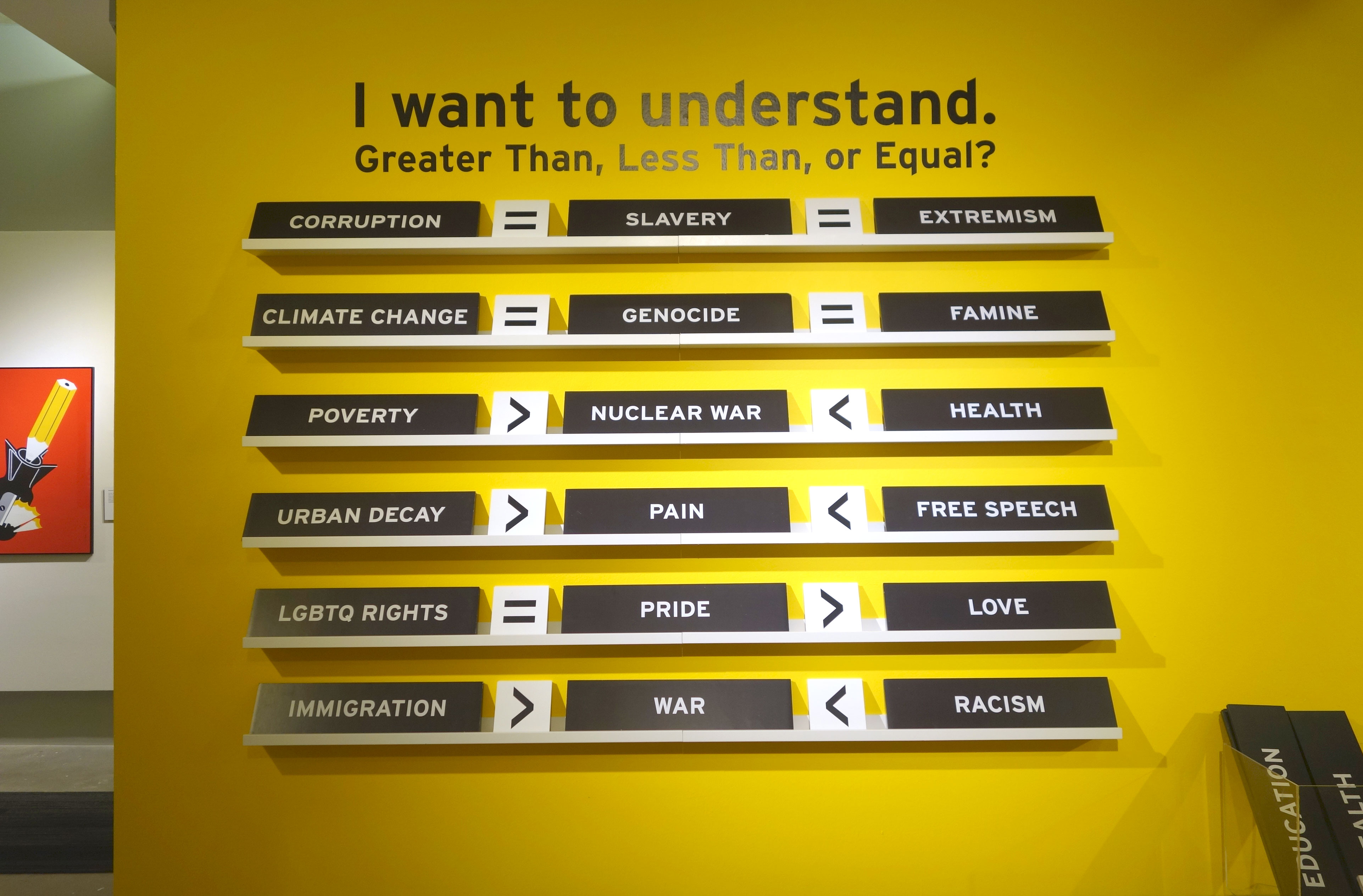
I Want to Understand Interactive Activity. Photo by Susan Sanders.
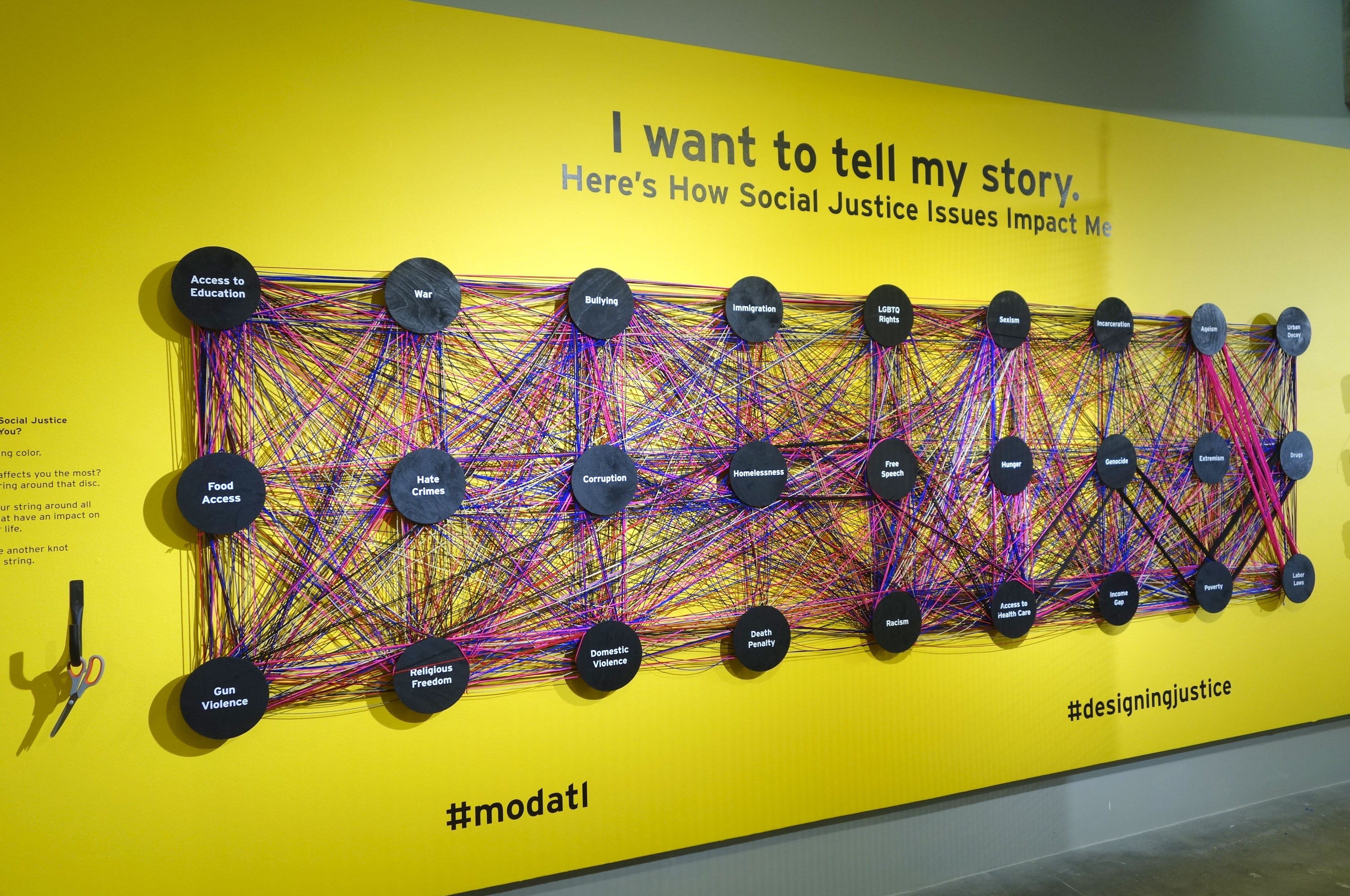
I Want to Tell My Story Interactive Activity. Photo by Susan Sanders.
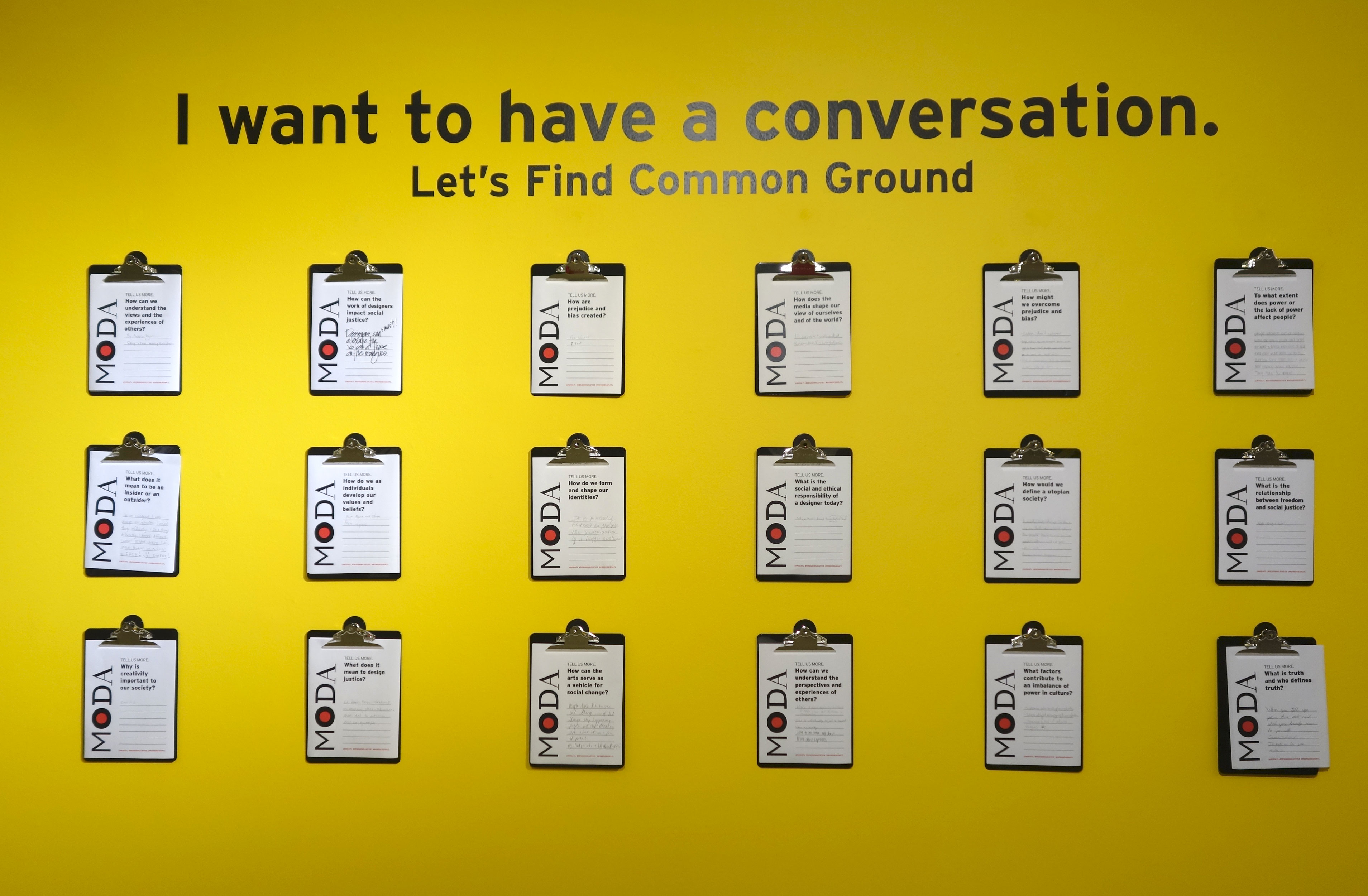
I Want to Have a Conversation Interactive Activity. Photo by Susan Sanders.
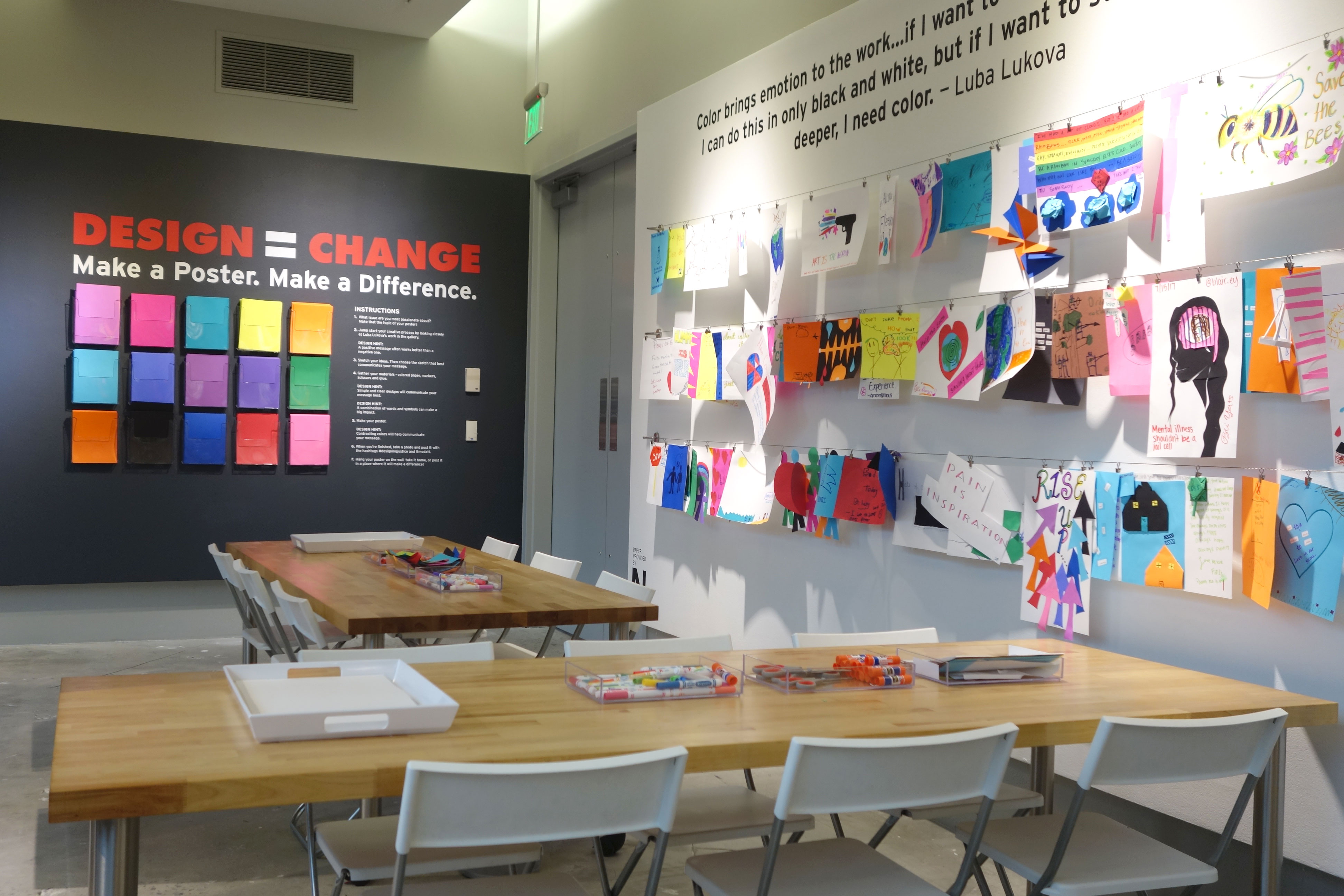
Design a Poster Interactive Activity. Photo by Susan Sanders.
So what is the museum of the 21st century? While MODA’s galleries are filled with the stunning and important work of Luba Lukova, our forward-facing museum is a place for contemplation and conversation about the injustices that afflict our world. Is this a means by which a design museum change the world? We think so.
Next up at MODA: Text Me: How We Live in Language, an exhibition curated by Debbie Millman, featuring the work of over 50 designers and artists will open to the public on September 17.

